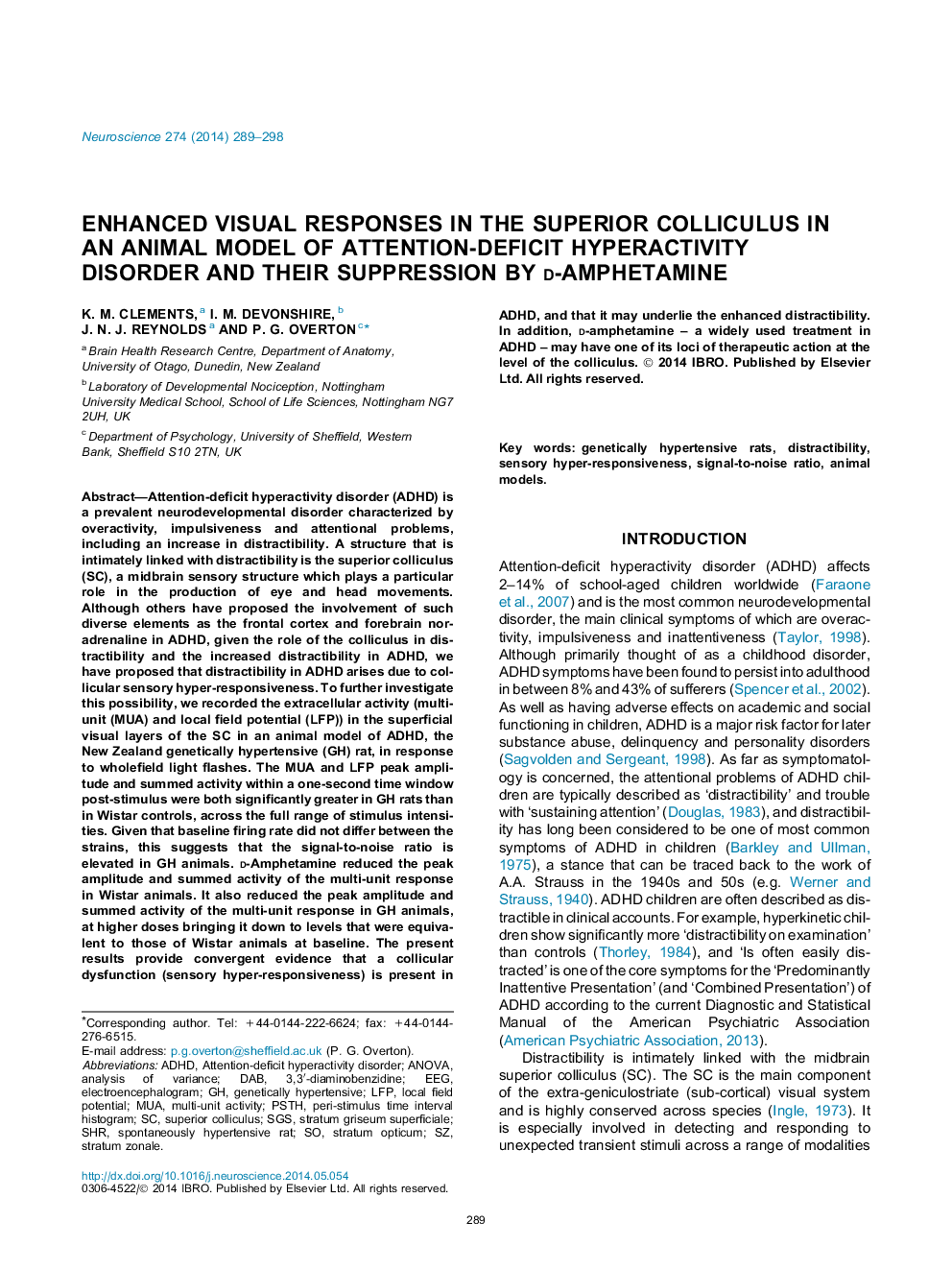| Article ID | Journal | Published Year | Pages | File Type |
|---|---|---|---|---|
| 4337622 | Neuroscience | 2014 | 10 Pages |
•Attention-deficit hyperactivity disorder involves an increase in distractibility.•Distractibility is critically dependent on the midbrain superior colliculus.•Visual sensory responses are enhanced in an animal model of ADHD.•d-Amphetamine normalizes visual responsiveness in the colliculus.•Colliculus may be hyperresponsive (and a therapeutic target) in ADHD.
Attention-deficit hyperactivity disorder (ADHD) is a prevalent neurodevelopmental disorder characterized by overactivity, impulsiveness and attentional problems, including an increase in distractibility. A structure that is intimately linked with distractibility is the superior colliculus (SC), a midbrain sensory structure which plays a particular role in the production of eye and head movements. Although others have proposed the involvement of such diverse elements as the frontal cortex and forebrain noradrenaline in ADHD, given the role of the colliculus in distractibility and the increased distractibility in ADHD, we have proposed that distractibility in ADHD arises due to collicular sensory hyper-responsiveness. To further investigate this possibility, we recorded the extracellular activity (multi-unit (MUA) and local field potential (LFP)) in the superficial visual layers of the SC in an animal model of ADHD, the New Zealand genetically hypertensive (GH) rat, in response to wholefield light flashes. The MUA and LFP peak amplitude and summed activity within a one-second time window post-stimulus were both significantly greater in GH rats than in Wistar controls, across the full range of stimulus intensities. Given that baseline firing rate did not differ between the strains, this suggests that the signal-to-noise ratio is elevated in GH animals. d-Amphetamine reduced the peak amplitude and summed activity of the multi-unit response in Wistar animals. It also reduced the peak amplitude and summed activity of the multi-unit response in GH animals, at higher doses bringing it down to levels that were equivalent to those of Wistar animals at baseline. The present results provide convergent evidence that a collicular dysfunction (sensory hyper-responsiveness) is present in ADHD, and that it may underlie the enhanced distractibility. In addition, d-amphetamine – a widely used treatment in ADHD – may have one of its loci of therapeutic action at the level of the colliculus.
